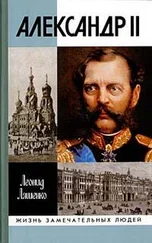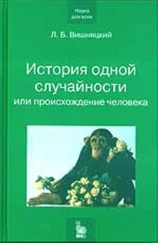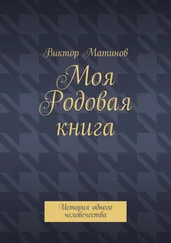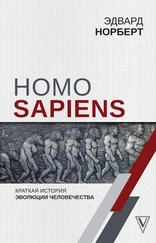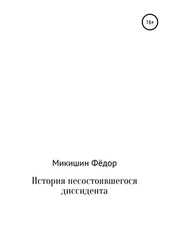Mellars P. The Neanderthal Legacy. An Archaeological Perspective from Western Europe. Princeton: Princeton University Press, 1996a.
Mellars P. Symbolism, language, and the Neanderthal mind // K. R. Gibson, P. Mellars (eds). Modelling the Early Human Mind. Cambridge: Cambridge University Press, 1996b. P. 15–32.
Mellars P. The impact of climatic changes on the demography of late Neandertal and early anatomically modern populations in Europe // T. Akazawa, K. Aoki, O. Bar-Yosef (eds). Neandertals and Modern Humans in Western Asia. New York: Plenum Press, 1998. P. 493–507.
Mellars P. Going East: New genetic and archaeological perspectives on the modern human colonization of Eurasia // Science. 2006. N 313. P. 796–800.
Milliken S. Neanderthals, anatomically modern humans, and ‘modern human behaviour’ in Italy // OJA. 2007. N 26. P. 331–358.
Milner R. Cranial capacity // The Encyclopedia of Evolution: Humanity’s Search For Its Origins. New York: Holt, 1990.
Mithen S. The Prehistory of the Mind. London: Thames and Hudson, 1996.
Mithen S. The Singing Neanderthals: the Origins of Music, Language, Mind and Body. London: Weidenfeld and Nicholson, 2005.
Mithen S. General intellectual ability // S. W. Gangestad, J. A. Simpson (eds). The Evolution of Mind: Fundamental Questions and Controversies. New York/London: The Guilford Press, 2007. P. 319–324.
Moser S. The visual language of archaeology: A case study of the Neanderthals // Antiquity. 1992. N 66. P. 831–44.
Narr K. J., Uslar R. von. J. C. Fuhlrott und der Neandertaler // K. Tackenberg (Her.). Der neandertaler und seine Umwelt. Bonn: Rudolf Habelt Verlag, 1956. P. 9–31.
Niewoehner W. A. Neanderthal hands in their proper perspective // K. Harvati, T. Harrison (eds). Neanderthals Revisited: New Approaches and Perspectives. Dordrecht: Springer, 2006. P. 157–190.
Noonan J. P., Coop G., Kudaravalli S., Smith D., Krause J., Alessi J., Chen F., Platt D., Pääbo S., Pritchard J. K., Rubin E. M. Sequencing and analysis of Neanderthal genomic DNA // Science. 2006. N 314. P. 1113–1118.
O’Connell J. F. How did modern humans displace Neanderthals? Insights from hunter-gatherer ethnography and archaeology // N. Conard (ed). Neanderthals and Modern Humans Meet? Tübingen: Kerns Verlag, 2006. P. 43–64.
Oliva M. Die Herkunft des Szeletien im Likhte neuer Funde von Jeseřany // Časopis Moravského Muzea v Brně, 1979. N 64. P. 45–78.
Oliva M. Pointes foliacées et technique levallois dans le passage paléolithique moyen/paléolithique supérieur en Europe centrale // J. Kozlowski (ed). L’Homme de Neandertal. Vol. 8. La Mutation. Liege: ERAUL, 1988. P. 125–131.
Onac B. P., Viehmann I., Lundberg J., Lauritzen S.-E., Stringer C., Popiţă V. U-Th ages constraining the Neanderthal footprint at Vârtop Cave, Romania // QSR. 2005. N 24. P. 1151–1157.
Oppenheimer S. The great arc of dispersal of modern humans: Africa to Australia // QI. N 202. P. 2–13.
Orlando L., Darlu P., Toussaint M., Bonjean D., Otte M., Hänni C. Revisiting Neandertal diversity with a 100,000 year old mtDNA sequence // CB. 2006. N 16. P. 400–402.
Orschiedt J. Der Fall Krapina — neue Ergebnisse zur Frage van Kannibalismus beim Neandertaler // Quartär. 2008. N 55. P. 63–81.
Patou-Mathis M. Neanderthal subsistence behaviours in Europe // IJO. 2000. N 10. P. 379–395.
Patte E. Les Néandertaliens: anatomie, physiologie, comparasions. Paris: Masson, 1955.
Paunescu A. Le Paléolithique et le Mésolithique de Roumanie (un bref aperçu) // L’Anthropologie. 1989. N 93. P. 123–58.
Pearson J. A. Hunters, fishers and scavengers: a review of the isotope evidence for Neanderthal diet // BF 2, article 2. 2007.
Pearson O. M. Has the combination of genetic and fossil evidence solved the riddle of modern human origins // EA. 2004. N 13. P. 145–159.
Pearson O. M., Cordero R. M., Busby A. M. How different were Neanderthals’ habitual activities? A comparative analysis with diverse groups of recent humans // K. Harvati and T. Harrison (eds). Neanderthals Revisited: New Approaches and Perspectives. Dordrecht: Springer, 2006. P. 135–156.
Pennington R. Hunter-gatherer demography // C. Panter-Brick, R. H. Layton, P. Rowley-Conwy (eds). Hunter-Gatherers. An Interdisciplinary Perspective. Cambridge: Cambridge University Press, 2001. P. 170–204.
Pennisi E. Tales of a prehistoric human genome // Science. 2009. N 323. P. 866–871.
Pérez-Pérez A., Espurz V., Bermúdez de Castro J. M., Lumley M. A. de., Turbón D. Non-occlusal dental microwear variability in a sample of Middle and Late Pleistocene human populations from Europe and the Near East // JHE. 2003. N 44. P. 497–513.
Pettitt P. B. Disappearing from the world: an archaeological perspective on Neanderthal extinction // OJA. 1999. N 18. P. 217–40.
Pettitt P. B. Neanderthal lifecycles: developmental and social phases in the lives of the last archaics // WA. 2000. N 31. P. 351–366.
Pettitt P. B. The Neanderthal dead: exploring mortuary variability in Middle Palaeolithic Eurasia // BF 1, article 4. 2002.
Plavcan J. M. Sexual dimorphism in primate evolution // YPA. 2001. N 44. P. 25–53.
Ponce de León M. S., Golovanova L., Doronichev V., Romanova G., Akazawa T., Kondo O., Ishida H., Zollikofer C. P. E. Neanderthal brain size at birth provides insights into the evolution of human life history // PNAS. 2008. N 16. P. 13764–13768.
Rahmstorf S. Ocean circulation and climate during the past 120,000 years // Nature. 2002. N 419. P. 207–214.
Rak Y. The Neanderthal: A new look at an old face // JHE. 1986. N 15. P. 151–164.
Rak Y., Ginzburg A., Geffen E. Does Homo neanderthalensis play a role in modern human ancestry? The mandibular evidence // AJPA. 2002. N 119. P. 199–204.
Ramirez Rozzi F. V., d’Errico F., Vanhaeren M., Grootes P. M., Kerautret B., Dujardin V. Cutmarked human remains bearing Neandertal features and modern human remains associated with the Aurignacian at Les Rois // JAnS. 2009. N 87. P. 1–30.
Rampino M. R., Self S. Volcanic winter and accelerated glaciation following the Toba super-eruption // Nature. 1992. N 359. P. 50–52.
Rhodes J. A., Churchill S. E. Throwing in the Middle and Upper Paleolithic: inferences from an analysis of humeral retroversion // JHE. 2009. N 56. P. 1–10.
Richards M. P. Diet shift at the Middle/Upper Palaeolithic transition in Europe? The stable isotope evidence // W. Roebroeks (ed). Guts and Brains. An Integrative Approach to the Hominin Record. Leiden: Leiden University Press, 2007. P. 221–234.
Richards M. P., Trinkaus E. Isotopic evidence for the diets of European Neanderthals and early modern humans // PNAS. 2009. N 16. P. 16034–16039.
Richards M., Harvati K., Grimes V., Smith C., Smith T., Hublin J.-J., Karkanas P., Panagopoulou E. Strontium isotope evidence of Neanderthal mobility at the site of Lakonis, Greece using laser-ablation PIMMS // JHE. 2008a. N 35. P. 1251–1256.
Richards M. P., Taylor G., Steele T., McPherron S. P., Soressi M., Jaubert J., Orschiedt J., Mallye J. B., Rendu W., Hublin J.-J. Isotopic dietary analysis of a Neanderthal and associated fauna from the site of Jonzac (Charente-Maritime), France // JHE. 2008b. N 55. P. 179–185.
Riel-Salvatore J., Clark G. A. Grave markers. Middle and Early Upper Paleolithic burials and the use of chronotypology in contemporary Paleolithic research // CAn. 2001. N 42. P. 449–479.
Читать дальше

